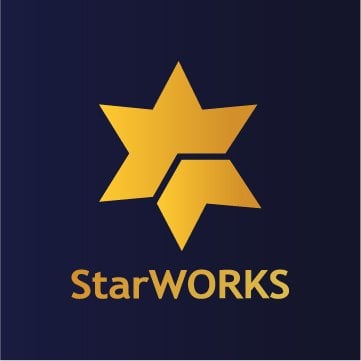Illustration of Decentralized Exchange, photo by Liza Summer on Pexels
The rise of decentralized exchanges (DEXs) has revolutionized how we trade cryptocurrencies. Unlike centralized exchanges, DEXs operate without intermediaries, allowing users to trade directly from their wallets in a peer-to-peer fashion. Two of the most prominent DEXs in the market today are Uniswap and PancakeSwap. In this article, we will compare these two platforms, exploring their features, tokenomics, and their unique advantages.
Brief Overview of Uniswap
Uniswap is a leading decentralized exchange built on the Ethereum blockchain. Launched in November 2018 by Hayden Adams, Uniswap employs an automated market maker (AMM) model, which uses liquidity pools instead of traditional order books. This model enables seamless token swaps and provides continuous liquidity.
Uniswap has become synonymous with the DeFi movement, offering a platform where anyone can create liquidity pools and trade ERC-20 tokens. For more information about Uniswap, read this [article](hyperlink coming).
Uniswap Tokenomics
Uniswap's native token, UNI, plays a crucial role in the platform's governance and incentivization mechanisms. UNI holders have the power to propose and vote on changes to the protocol, making Uniswap a truly decentralized and community-driven platform. Additionally, UNI tokens are distributed as rewards to liquidity providers, encouraging users to contribute to the liquidity pools and ensuring the platform remains active and robust.
What is PancakeSwap?
PancakeSwap is a decentralized exchange built on the Binance Smart Chain (BSC). Launched in September 2020, PancakeSwap utilizes the same AMM model as Uniswap but offers lower transaction fees and faster transaction speeds due to BSC's efficient infrastructure. PancakeSwap has quickly gained popularity, becoming one of the leading DEXs in the market.
Introducing Binance Smart Chain Foundation
The Binance Smart Chain (BSC) is a blockchain platform developed by Binance designed to support decentralized applications (DApps) and smart contracts. It operates parallel to the Binance Chain, providing a high-performance environment for DeFi projects. With its low transaction fees and fast block times, BSC has become a preferred choice for many developers and users in the DeFi space.
Uniswap vs PancakeSwap: All You Need to Know
Both Uniswap and PancakeSwap offer unique features and advantages, catering to different needs and preferences within the DeFi community. Here's a detailed comparison of the two platforms:
Transaction Costs Compared
One of the main differences between Uniswap and PancakeSwap is the cost of transactions. Uniswap, built on the Ethereum blockchain, often faces high gas fees, especially during periods of network congestion. These fees can be a barrier for smaller traders and impact the overall cost-effectiveness of trading on Uniswap.
In contrast, PancakeSwap benefits from the low transaction fees of the Binance Smart Chain. BSC's efficient architecture allows for significantly cheaper and faster transactions, making PancakeSwap an attractive option for users looking to minimize their trading costs.
Liquidity and Trading Volume
Uniswap boasts a large and diverse liquidity pool, with a wide range of ERC-20 tokens for trading. Its first-mover advantage and strong community support have cemented its position as a leading DEX regarding liquidity and trading volume.
While newer, PancakeSwap has rapidly gained traction and built substantial liquidity pools, particularly for tokens on the Binance Smart Chain. Its lower fees and fast transaction times have attracted many users, contributing to its increasing trading volume and liquidity.
Why STARX Token Will Switch to DeFi?
Decentralized Finance (DeFi) has transformed the financial landscape by offering open and permissionless access to financial services. DeFi platforms like Uniswap and PancakeSwap enable users to trade, lend, and borrow assets without intermediaries, reducing costs and increasing accessibility.
The STARX Token, developed by StarWORKS, has embraced the DeFi movement to leverage these benefits. By going DeFi, STARX Token can provide users with cheaper transaction fees, faster processing times, and access to a broader range of financial services. The integration with platforms like Uniswap and PancakeSwap allows STARX Token holders to participate in liquidity provision, yield farming, and governance, further enhancing the token's utility and value within the DeFi ecosystem.
Conclusion
Uniswap and PancakeSwap represent two of the most influential decentralized exchanges in the crypto space, each offering unique advantages. Uniswap's strong liquidity and community support make it a leading platform for trading ERC-20 tokens. At the same time, PancakeSwap's lower transaction fees and fast processing times provide a cost-effective alternative on the Binance Smart Chain.
Understanding the strengths and differences of these platforms is crucial for users and developers in the DeFi space to make informed decisions. As the DeFi ecosystem continues to evolve, platforms like Uniswap and PancakeSwap will play a pivotal role in shaping the future of decentralized finance.
By embracing the DeFi revolution, tokens like STARX are positioned to unlock new opportunities and provide users with innovative financial solutions. Whether you are a trader, liquidity provider, or DeFi enthusiast, Uniswap and PancakeSwap offer compelling platforms to explore and engage with the dynamic world of decentralized finance.
If you’re as excited about the future of decentralized finance as we are, join our growing community. Stay updated on all things related to our STARX Token by joining our Discord Channel at https://discord.gg/BbjrMK4W and following our Telegram at https://t.co/lHVIbhA5W1. Be part of the conversation and get the latest updates firsthand!




